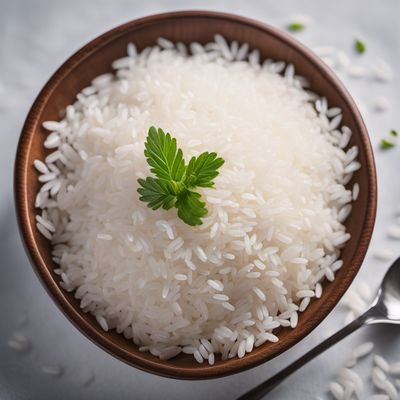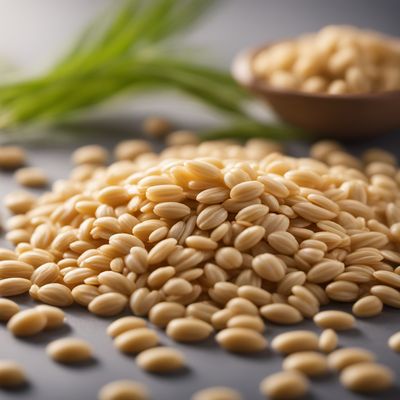
Ingredient
Wheat, popped
The Crunchy Delight: Exploring Popped Wheat
Popped wheat is made by heating whole wheat kernels until they burst open, resulting in a light and crispy texture. It has a golden brown color and a delicate, airy structure. The popped kernels are small and round, resembling miniature popcorn. With a satisfying crunch, popped wheat offers a unique mouthfeel that enhances the overall eating experience. Its mild flavor allows it to complement both sweet and savory dishes, making it a versatile ingredient in the culinary world.
Origins and history
Popped wheat has been consumed for centuries and is believed to have originated in ancient civilizations such as Mesopotamia and Egypt. It was a staple food in these regions due to its abundance and nutritional value. Popped wheat was often used in traditional dishes and was considered a valuable source of sustenance. Over time, its popularity spread to other parts of the world, and today it is enjoyed in various cuisines globally.
Nutritional information
Popped wheat is a nutritious ingredient, rich in fiber, protein, and essential minerals such as iron and magnesium. It is also low in fat and calories, making it a healthy choice for those watching their weight or looking for a guilt-free snack option.
Allergens
Wheat is a common allergen, and individuals with wheat allergies or gluten intolerance should avoid popped wheat.
How to select
When selecting popped wheat, look for kernels that are uniformly popped and have a light golden color. Avoid any kernels that appear burnt or have a dark brown color, as they may have a bitter taste. Additionally, ensure that the popped wheat is stored in airtight packaging to maintain its freshness and crispness.
Storage recommendations
To maintain the freshness and crispness of popped wheat, store it in an airtight container in a cool, dry place. Avoid exposure to moisture, as it can cause the kernels to become soggy and lose their crunchiness.
How to produce
Popped wheat can be produced at home by placing whole wheat kernels in a hot, dry skillet or a popcorn popper. Heat the kernels over medium-high heat, shaking the pan occasionally until they start to pop. Once the popping slows down, remove the pan from the heat and let it cool. Homemade popped wheat can be stored in an airtight container for future use.
Preparation tips
Popped wheat can be enjoyed as a standalone snack or used as a topping for salads, yogurt, or desserts. It can also be incorporated into granola bars, energy balls, or trail mixes for an added crunch. When using popped wheat in recipes, it is best to add it towards the end of the cooking process to preserve its texture. Additionally, lightly toasting popped wheat in a dry skillet can enhance its flavor and crunch.
Culinary uses
Popped wheat is commonly used as a topping for breakfast cereals, smoothie bowls, and ice cream. It can also be added to baked goods such as cookies, muffins, and bread for a delightful texture. In savory dishes, popped wheat can be sprinkled over salads, soups, or roasted vegetables to provide a satisfying crunch.
Availability
Popped wheat is commonly available in grocery stores and health food stores worldwide.




